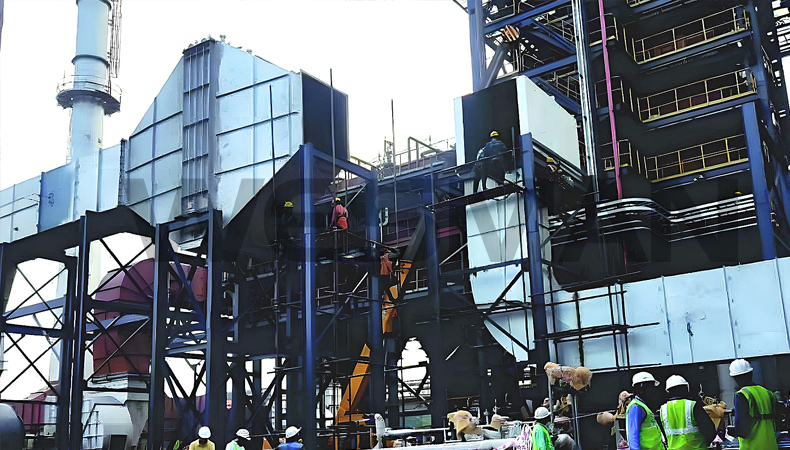
OVERVIEW: Combustors or Incinerators are fired with Burners and heat is generated as a result of combustion. Air is heated inside the Combustor and this hot air moves towards the Waste Heat Recovery Boiler (WHRB) through the duct connected between the outlet of the Combustor and the WHR Boiler. The hot air / flue gas generated due to combustion, where the temperature is between 500°C to 1500°C depending upon the system requirement and capacity of the WHR Boiler. When this flue gas passes through the Economiser of the WHR Boiler, feed water inside the Economiser Coils collects the heat from the hot air or waste flue gases upto a certain temperature and these flue gases are passed through the ESP and finally emitted through the stack with the help of ID Fan. By heating the water in different stages from the waste heat of flue gas, the energy consumption is reduced. Finally the heated water is converted to steam when it passes through the super heaters; the high temperature superheated steam is fed to the Turbine-Generator set for generation of electricity.
FUEL SAVING METHOD BY ADOPTING WASTE HEAT RECOVERY SYSTEM:
INDUSTRIAL APPLICATIONS:
IRON & STEEL
ALUMINIUM
CEMENT
GLASS
PETROCHEMICAL